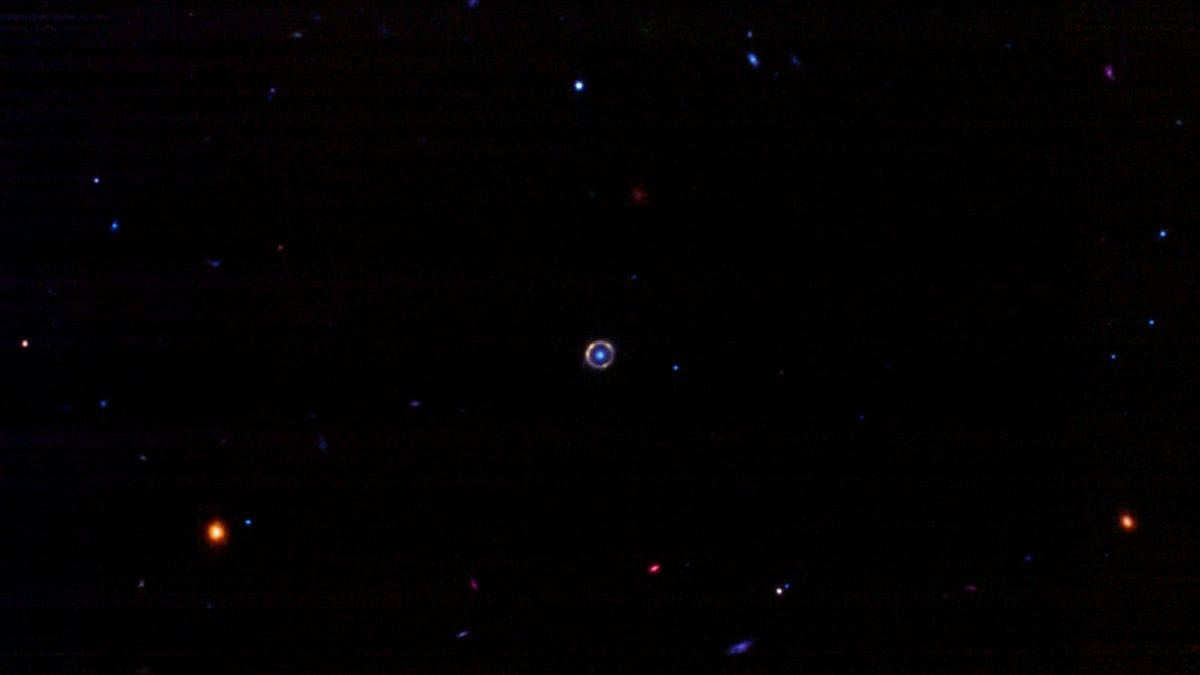The cosmos has continued to reveal its mysteries and splendors with the revolutionary imaging of an Einstein ring by the Euclid space telescope. Conducted by the European Space Agency (ESA), this discovery has captivated astronomers worldwide, unveiling a marvel of gravitational lensing that was theorized by Albert Einstein over a century ago. The finding not only provides stunning visuals of cosmic phenomena but also promises uncharted insights into the dimensions of dark matter, energy, and the very fabric of space-time.
In September 2023, during its preliminary testing phase, Euclid detected the rare Einstein ring encircling a galaxy approximately 590 million light-years from Earth, a relatively small distance in astronomical terms. Named after Einstein’s general theory of relativity, the rare phenomenon emerges when the gravitational field of a massive celestial body bends and magnifies the light coming from another source directly aligned behind it. Such perfect alignments are statistically rare, making this discovery an exceptional case of observational astronomy.
The massive scientific value of this rare ring lies in what it can reveal about the massive objects producing these distortions. The resulting ring of light functions as a natural telescope, unveiling hidden features of a galaxy billions of light-years away. This enables astronomers to observe faraway regions of the universe with unparalleled detail. Moreover, the phenomenon showcases the intricate interplay of mass, gravity, and light, offering insights into Einstein’s theoretical predictions.
Euclid’s remarkable achievement demonstrates why it is a pivotal instrument in modern cosmology’s long quest to decipher the “dark universe.” Equipped to observe billions of galaxies and map more than one-third of the universe, its mission spans an extensive six-year journey of collecting precise data. Central to this mission is the study of dark matter and dark energy, elusive elements that collectively constitute more than 95% of the universe. While invisible in traditional observations, their influence on gravitational forces—evident through phenomena like this Einstein ring—becomes measurable through such celestial geometry.
This visual triumph is also a technological feat. Launched in July 2023, Euclid’s primary goal is to capture high-resolution snapshots of cosmic history in order to detail how the universe’s expansion is driven. By connecting the dots between gravitational lensing structures such as Einstein rings and the observed cosmic acceleration, scientists can start placing stronger constraints on cosmological models.
It’s important to note how this Einstein ring is exemplary of gravitational lensing in its most vivid form; it represents not just beauty, but science at its fullest potential. What at first appears to be an aesthetic symmetry—a halo of light—is in fact a spacecraft conservatory unlocking secrets about spacetime curvature, energy fluctuations, and potential tools for next-generation astronomy. Through magnification, astronomers gain critical insights into not just the warped outer structures but hidden interiors of these far-off galaxies.
Since its launch, ESA’s Euclid telescope has exceeded expectations, emphasizing the importance of international collaboration in uncovering the secrets of outer space. The U.S. space agency NASA contributed to the telescope’s instruments and design, adding a global dimension to this collaborative mission.
As the telescope continues its cosmic quest, findings like this Einstein ring are only the beginning. These events unleash a cascade of research possibilities for understanding celestial bodies and provide a potential roadmap for future models and simulations of galactic dynamics.
This Einstein ring is a reminder of the awe-inspiring power of natural law—offering astronomers a glimpse into events that occurred billions of years ago yet are only now becoming visible. Beyond its striking symmetry, it is symbolic of science’s diligence, technology’s precision, and the universe’s infinite capacity for wonder.
As Euclid deepens its perspective over coming years, the implications of such studies will stretch not only across space but directly into classrooms and boardrooms where the future of human exploration is conceived. With this discovery, the telescope solidifies its standing as the modern nexus of deep-space potential and discovery while validating century-old theories in their most stunning forms.
In our ever-expanding journey to connect the dots of time, stars, and mystery, this Einstein ring rests as both a milestone and a call to continue universal questioning.



